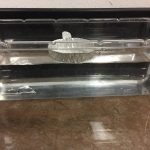The quiz on 10/12 will cover concepts/topics from lessons 3 and 4 including the following:
- Models were created to represent earth’s plates of different shapes and sizes that completely cover the earth with no gaps. These models like all models have strengths and limitations as to how they explain phenomena. you should be able to explain the strengths and limitations of one of the play doh plate models you made.
- Most of earth’s plates are made up of oceanic and continental crust.
- Matter expands and contracts due to heating and cooling. The expansion and contraction results in different densities. expand=less dense and contract=more dense
- Density differences caused by expansion and contraction of matter lead to convection currents which can happen in gases, liquids and solids.
- Convection currents in the mantle are one explanation for the movement of plates on earth’s surface (there are others which we will be covering)
- The heat source for convection currents in the earth’s mantle is the core of the earth which provides a constant source of heat..
Students should be familiar with and able to explain/draw all of the demonstrations and labs done/viewed/discussed in these two lessons. (e.g: play-doh models of earth’s plates, demonstration with tank of water containing beaker of blue cold water and red hot water, lab with 3 blobs of food coloring in the bottom of the tank resting on a beaker of hot water, demonstration of egg getting sucked into the flask after heating and cooling, balloon and bottle expanding and contracting in hot and cold water, aluminum pan floating and crushed pan sinking due to density differences.)

The photo to the left shows the squashed pan has sunk in the water because it is more dense and the open pan which has air trapped in it is less dense and floats on the water.
The videos below are similar to the demonstration and lab we did in class. YOu can just watch or if you listen you will hear that the narrator is using the same model to explain air currents as we were to model convection currents in the earth’s mantle.